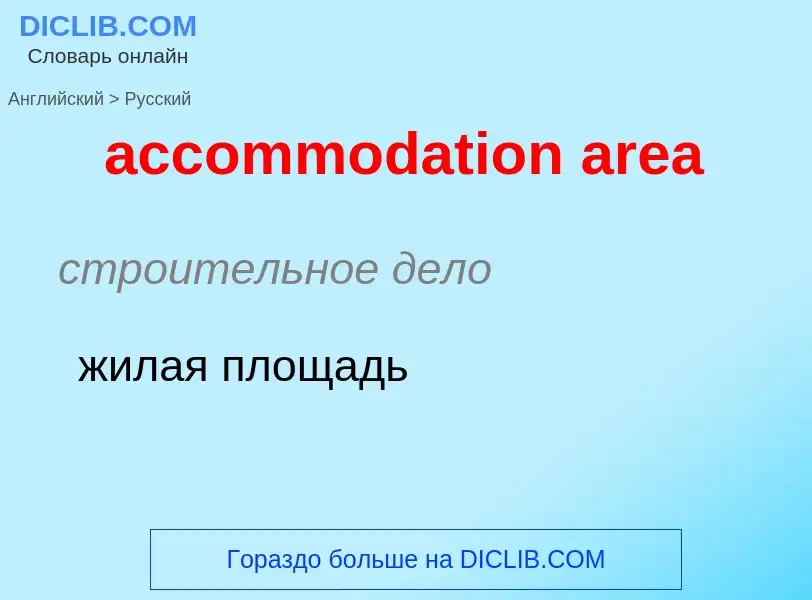Translation and analysis of words by artificial intelligence
On this page you can get a detailed analysis of a word or phrase, produced by the best artificial intelligence technology to date:
- how the word is used
- frequency of use
- it is used more often in oral or written speech
- word translation options
- usage examples (several phrases with translation)
- etymology
accommodation area - translation to russian
строительное дело
жилая площадь
общая лексика
бытовка
бытовое помещение
Wikipedia
Communication accommodation theory (CAT) is a theory of communication developed by Howard Giles. This theory concerns "(1) the behavioral changes that people make to attune their communication to their partner, (2) the extent to which people perceive their partner as appropriately attuning to them." The basis of the theory lies in the idea that people adjust (or accommodate) their style of speech to one another. Doing this helps the message sender gain approval from the receiver, increases efficiency in communication between both parties, and helps the sender maintain a positive social identity. This theory is concerned with the links between language, context, and identity. It focuses on both the intergroup and interpersonal factors that lead to accommodation, as well as the ways that power, macro and micro-context concerns affect communication behaviors. Accommodation is usually considered to be between the message sender and the message receiver, but the communicator also often accommodates to a larger audience – either a group of people that are watching the interaction or society in general.
"Communication accommodation theorists focus on the patterns of convergence and divergence of communication behaviors, particularly as they relate to people’s goals for social approval, communication efficiency, and identity". "Convergence" refers to strategies through which individuals adapt to each other's communicative behaviors to reduce these social differences. Meanwhile, "divergence" refers to the instances in which individuals accentuate the speech and non-verbal differences between themselves and their interlocutors. The speech accommodation theory was developed to demonstrate all of the value of social psychological concepts to understanding the dynamics of speech. It sought to explain "... the motivations underlying certain shifts in people's speech styles during social encounters and some of the social consequences arising from them." Particularly, it focused on the cognitive and affective processes underlying individuals' convergence and divergence through speech. The communication accommodation theory has broadened this theory to include not only speech but also the "non-verbal and discursive dimensions of social interaction". CAT has also created a different perspective from other research in language and social interaction—and communication more generally—that focuses on either interpersonal or intergroup communication.

